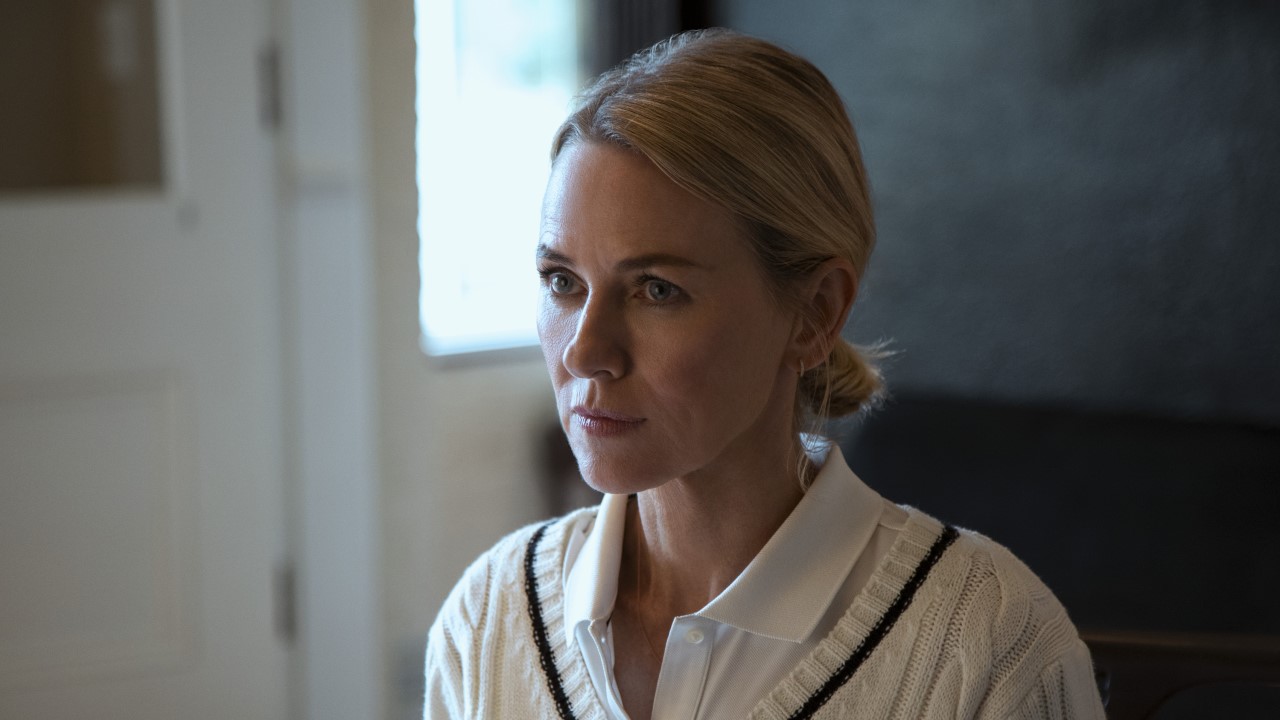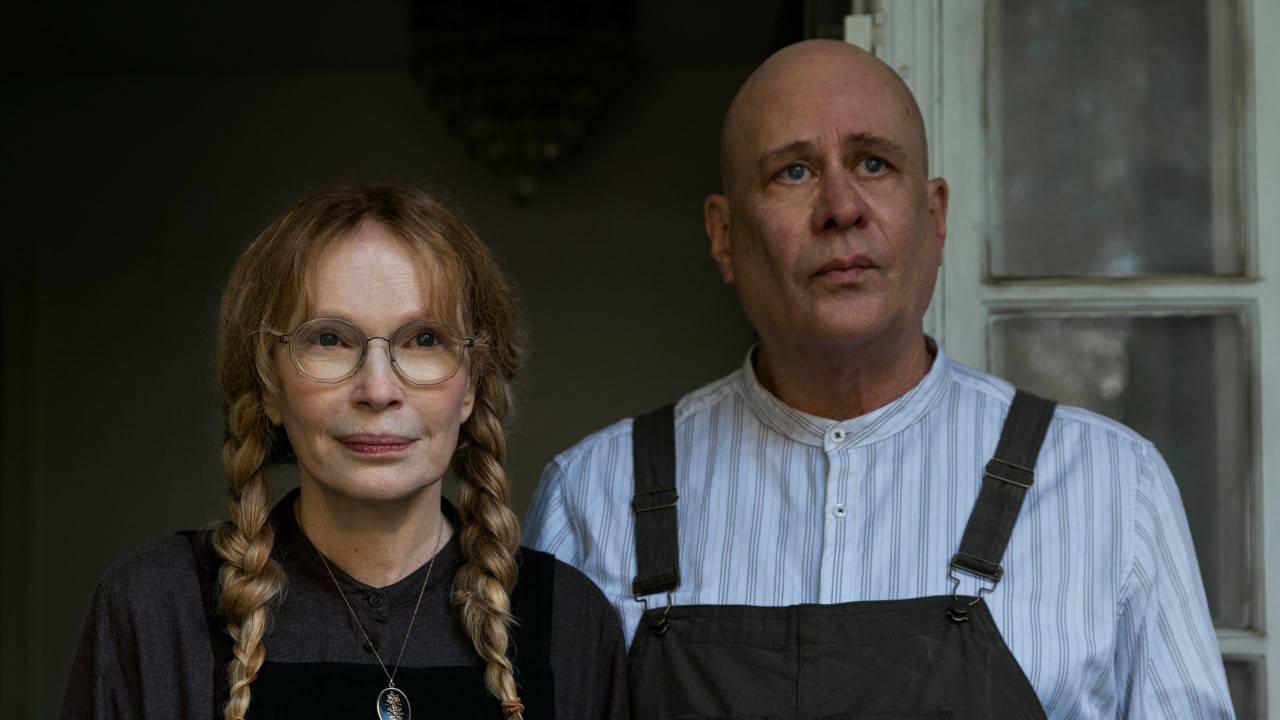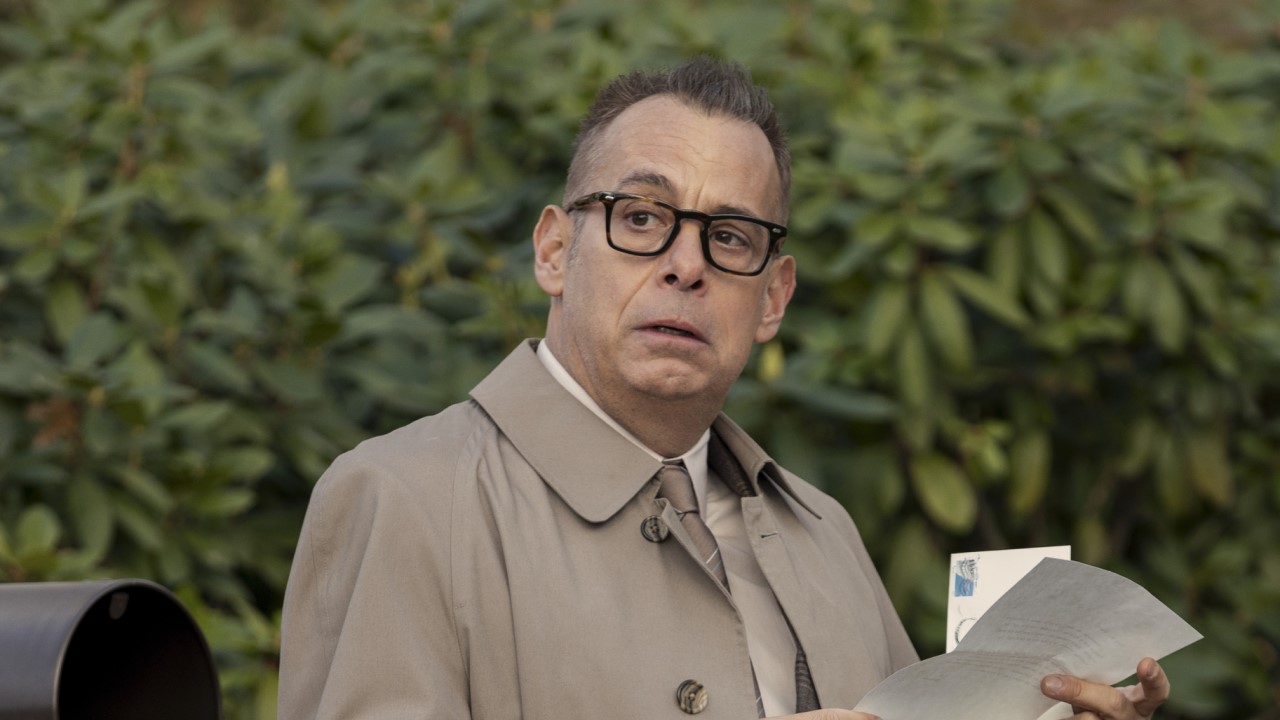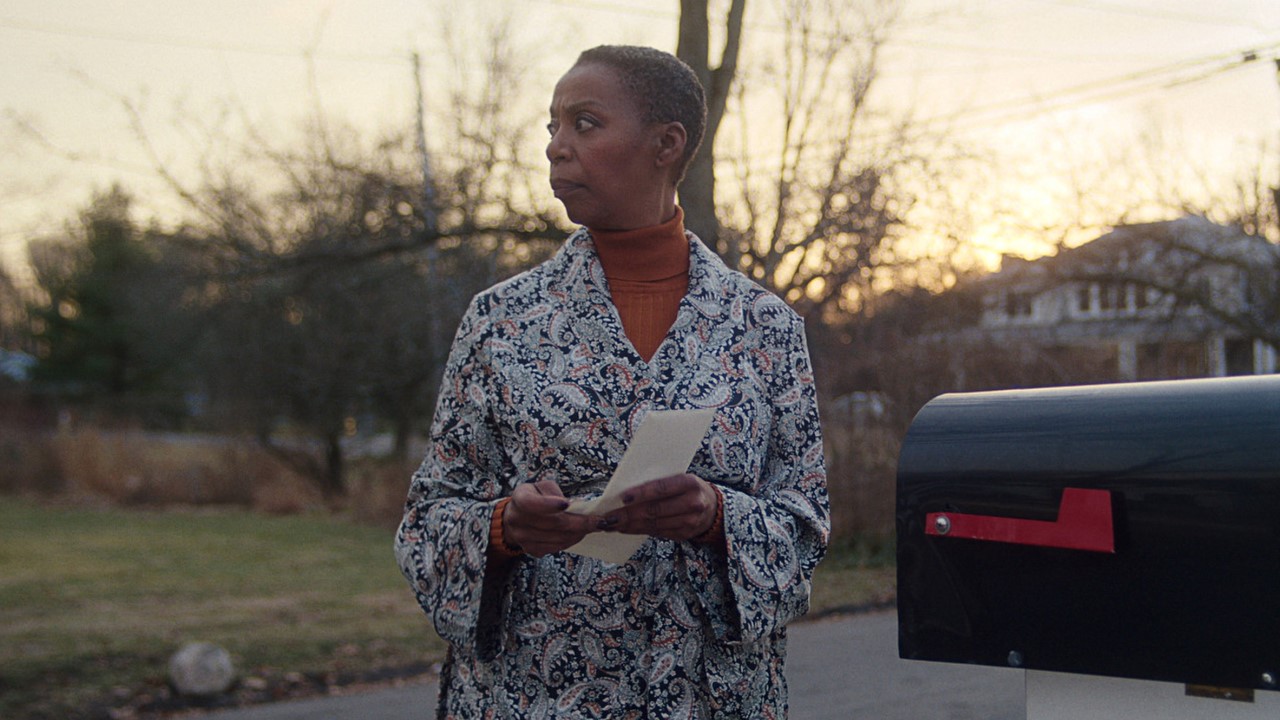Netflix's The Watcher: 10 Biggest Details Completely Fictionalized For TV
Ryan Murphy knows how to dramatize the bejesus out of real life.

Ryan Murphy’s horror-adjacent non-killer thriller The Watcher has held a lot of mental real estate within the brains of those with Netflix subscriptions, and for good reason. The Top 10 mainstay is based on a disturbing real-life incident in which a family became obsessed over sporadic and threatening messages from someone all too familiar with their lives, and particularly with their new home. And with a cast of talents such as Bobby Cannavale, Naomi Watts, Jennifer Coolidge, Margo Martindale and beyond, who wouldn’t be completely enamored with the tense tale?
Though viewers have fully gone public with negative opinions about The Watcher’s true-to-life ambiguous ending, the lack of a resolution still can’t fully take away how disturbing all of the moving parts were throughout the seven-episode series. And it’ll either comfort or infuriate audiences to realize that the bulk of The Watcher’s wildest and most unexplainable moments were scripted specifically for harrowing entertainment purposes. So let’s run down all of the biggest details that weren’t actually based on reality, starting with this freebie of a fact that the Broaddus family never even moved into the house after buying it.

The Watcher Only Ever Sent Letters, And Not That Many
Anyone coming away from The Watcher might think that the real family that the Brannocks were based on were constantly being harassed with letters, phone calls and occasional ferret-cides. But in reality, according to The Cut journalist Reeves Wiedeman, they only received four separate letters from someone calling themselves The Watcher. One ahead of finalizing the home purchase, the next two across the next six weeks, and then a fourth letter (which is theorized as possibly being from a different source) arrived years later in the midst of a zoning board debate tied to the Broaddus family's desperate attempts to sell the house.
What's more, The Watcher also didn't have as far of a reach when it comes to communicating with others. To date, only two other letters are suspected as potentially being sent by the stalker. One went to the Woods family, the former owners of 657 Boulevard, just prior to the home sale; and one was allegedly sent to a neighbor down the street after the story initially went viral. In both cases, the parties assumed the letter to be non-threatening and akin to a prank, and threw them away.

The Weirdo Neighbors Weren't So Weird, And Didn't Lead Historical Society
Mia Farrow and Terry Kinney's Pearl and Jasper Winslow were based on the 90-something Peggy Langford and her schizophrenic son Michael. The latter was indeed a pertinent suspect in the real-life case, and did have a reputation for absentmindedly wandering through people's yards and fetching newspapers. But there weren't instances where Michael or anyone else was ever inside 657 Boulevard, though he for years remained a suspect where the Broadduses were concerned. (That also means
As well, Peggy did not head up the Westfield Historical Preservation Society or anything like it. While the group does indeed exist, the only time they were involved in the real-world New Jersey case is when they voiced displeasure over the Broaddus family's attempts to tear down the home. And as far as anyone knows, there weren't any other secret cabals in town either.

No Neighbors Were Presumed Murder Victims, Though The Lawn Chairs Were Legit
Richard Kind and Margo Martindale were the perfect pair to bring Mitch and Mo to life with a sense of genial menace, but that doesn’t mean their suspicion-magnet Watcher characters were entirely based on reality. When it comes to the reported facts, the couple living behind 657 Boulevard were said to have posted a pair of lawn chairs questionably close to their neighbors’ lot, but that’s where the similarities both begin and end.
Your Daily Blend of Entertainment News
There doesn’t appear to be any legitimacy, however, to the idea that they were actively haughty and confrontational, and considering no one actually moved into the house during this ordeal, the real-life Mitch and Mo, as it were, weren’t constantly yammering about people playing instruments. As well, the area reportedly hasn’t been privy to any murder investigations for decades, so don’t put much faith in the couple’s son randomly kidnapping and murdering a homeless couple that shared physical characteristics with his parents.

The "Ode To A House" Project Was All Made Up
One theory that hadn’t been approached during the initial news cycle surrounding the Broaddus family’s ordeal involved the screenwriter, novelist and high school teacher Robert Kaplow, a Westfield native arguably best known for Me and Orson Welles. He supposedly hadn’t ever assigned any students with writing letters to houses in the area, but rather told stories about having done so himself for a particular abode. But it wasn’t 657 Boulevard, according to Kaplow himself; rather, he claims to have written to a Victorian house on the north side, and later befriended the family who lived there.
The writer is apparently all too aware of public scrutiny, which has presumably risen in intensity since the show was released. More suspicion went his way due to the fact that his brother Richard is the lawyer who represented the Woods family at a point when the Broadduses attempted to sue them for not disclosing their Watcher-penned letter. But this is allegedly all circumstantial.

No Security Dude, And No Creepy Daughter Relationship
Though there are reported mentions of the Broaddus family installing security cameras at 657 Boulevard, as well as a police officer who observed the property at points, Henry Hunter Hall’s teen entrepreneur Dakota and his security upstart were completely made up for the show. Thus, the creative team intentionally shoehorned in arguably The Watcher’s skeeziest plotline, concerning Dakota’s legal-in-Jersey relationship with 16-year-old Ellie Brannock, and Dean’s mental reckoning with it all. To that end, the Broaddus’ three children were all under ten years old when this all began.
One element of Dakota’s story that was vaguely based on reality ties to a couple who were parked in front of 657 Boulevard at some point. When officers questioned them, the female stated her boyfriend played video games using the screen name “The Watcher,” but that’s about all the context there is, as the police were never able to formally question the boyfriend about it.

Sketchy AF Realtor Karen Didn't Exist
Jennifer Coolidge is nailing it on all cylinders by way of heightened, high-profile dramas, as also witnessed on HBO’s The White Lotus. And it’s a testament to her talents that the Brannocks’ detective-schtupping realtor Karen Calhoun appears to be based on little more beyond personified paranoia. The reports on the Broaddus family don’t really delve into any personal qualities tied to who they worked with, only mentioned the well-established Coldwell Banker real estate giant as their realtor during their initial attempts to sell the home. While there have been theories about a greedy agent, nothing major has been revealed that has strongly supported that idea.

John Graff's Story Is Half-Legit, Half-Ludicrous
The Tony-winning theatre vet Joe Mantello brings all the creepster vibes as John Graff, whose killer backstory is rather closely based on one of New Jersey’s most notorious murder cases. During a single day in 1971, Westfield resident John List murdered his wife, mother, and three children, leaving the bodies in the house along with a note explaining his actions, and then fleeing the area. It was a month before the bodies were found, and it was another 18 years before List was identified and apprehended through the case being reported on a first-season episode of America’s Most Wanted. He’d since changed his name, remarried, and joined a Lutheran church, among other details that match up with the show, such as allegedly all known photographs of him having been destroyed.
However, The Watcher took things a bit too far by even having him be around to begin with. After being captured in 1989, the real John List was put on trial and was convicted in 1990 on five counts of first degree murder. He remained in prison, despite appeals, until his death at 82 in 2008 of pneumonia complications. Plus, he famously lived within a mansion on Hillside Ave. dubbed Breeze Knoll (which burned down without explanation a few years after the murders), and doesn’t seem to have had any direct ties to 657 Boulevard, and absolutely never lived within its walls.

657 Boulevard Didn't Have Underground Tunnels Or A Dumbwaiter
Two of the most interesting elements laid out there about The Watcher’s central domicile are its functioning dumbwaiter (which doesn’t ever get a great payoff) and the tunnels stretching beneath the property that connected to at least one other home in the neighborhood (which felt weirdly timed after everything that played out in Only Murders in the Building). But when one considers that none of the in-home terror that the Brannocks suffer is based on reality, it’s perhaps easier to accept that the real Westfield house doesn’t actually have either a dumbwaiter or any tunnel systems. It was also noted by Reeves Wiedeman that the family did have professionals look into the claims that something was within the home’s walls, but nothing of note was ever discovered.

The Family's Real-Life P.I. Was No Theodora Birch
As portrayed by Noma Dumezweni, soon to be seen in Disney’s live-action The Little Mermaid, the Brannocks’ private investigator Theodora Birch is perhaps The Watcher’s most empathy-worthy character, as she literally dedicated her final stage in life to trying to bring some semblance of justice and/or sanity to Dean and Nora during their time of terror. To the point where she fallaciously tried to take the blame for it all on her deathbed, if only to offer Dean mental peace. But she was just as much a whim of the writers as anything else, with the Broaddus family’s actual P.I., a retired NYPD cop named Frank Shea, falling into far more stereotypical and less flamboyant expectations.
So in the end, it probably only made sense for The Watcher to end on a question mark, since so many of the clues that were laid out for audiences weren’t wholly based on the actual case. But it’s still fun to think about who within the show itself was guilty. My vote is “everyone, even the kids and people who had nothing to do with it.” That’s the safest bet, anyway.
All seven episodes of The Watcher are available to stream on Netflix now, and you can also find lots of other shows in the same vein out there. Head to our 2022 TV premiere schedule to see what new and returning shows will be popping up soon.

Nick is a Cajun Country native and an Assistant Managing Editor with a focus on TV and features. His humble origin story with CinemaBlend began all the way back in the pre-streaming era, circa 2009, as a freelancing DVD reviewer and TV recapper. Nick leapfrogged over to the small screen to cover more and more television news and interviews, eventually taking over the section for the current era and covering topics like Yellowstone, The Walking Dead and horror. Born in Louisiana and currently living in Texas — Who Dat Nation over America’s Team all day, all night — Nick spent several years in the hospitality industry, and also worked as a 911 operator. If you ever happened to hear his music or read his comics/short stories, you have his sympathy.
